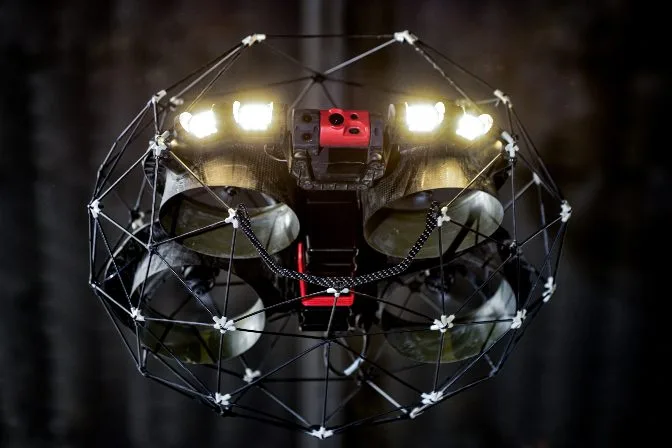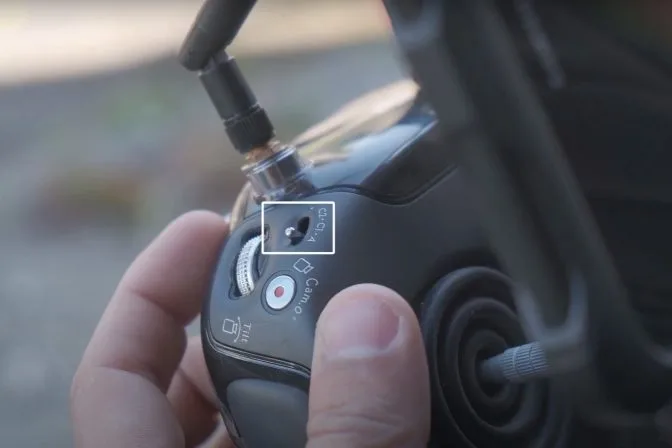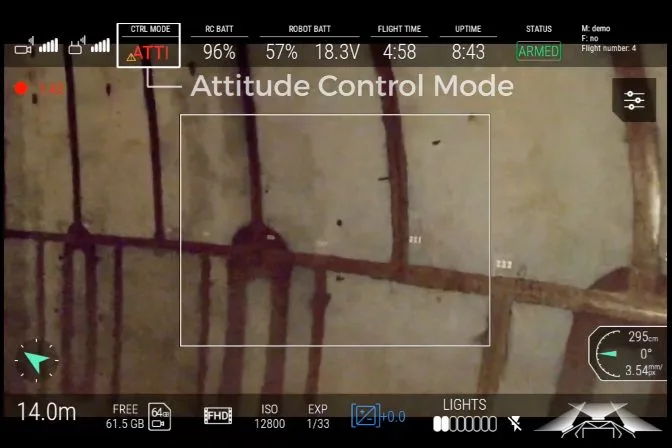ATTI Mode: A Comprehensive Guide
ATTI mode, short for Attitude Mode, is the most hands-on way to fly a drone. Unlike automated flight modes that rely on GPS and optical sensors, ATTI mode gives you full manual control over the drone’s orientation and movement.
As drone technology has evolved, many modern drones now come with advanced features like GPS, obstacle avoidance, and intelligent flight modes that make flying easier than ever before. However, there are still situations where these systems aren't reliable or even available. That's when ATTI mode becomes essential.
One of the most common scenarios where ATTI mode is needed is during indoor flights. In such environments, GPS signals can be weak or completely absent, making it impossible for the drone to maintain stable positioning. In these cases, pilots must switch to ATTI mode to manually control the drone.
In ATTI mode, the drone does not use GPS or visual positioning systems. This means the pilot must take full responsibility for keeping the drone steady and navigating it through complex environments. While this may sound challenging, it also offers greater flexibility in certain situations.

No GPS zone
What Is ATTI Mode?
ATTI mode is a flight setting that disables all automated stabilization systems, including GPS and optical flow. When in ATTI mode, the drone will not automatically adjust its position or altitude. Instead, the pilot must manually control every aspect of the flight.
This mode is ideal for situations where GPS is unavailable or unreliable, such as indoors, in tunnels, or under dense foliage. It also allows for more precise control in tight spaces where other flight modes might struggle.
[Related read: What Is a GPS-Denied Drone?]
When to Use ATTI Mode
While ATTI mode is less common in consumer drones, it remains crucial in specialized applications. Many industrial and commercial drones, especially those used for inspections, require ATTI mode to operate effectively in GPS-denied environments.
Indoor inspections, such as checking sewers, mines, and large storage tanks, often require ATTI mode because GPS signals cannot penetrate these structures. Similarly, flying near large metal buildings or bridges can cause signal interference, making ATTI mode a safer option.
The mining industry, for example, relies heavily on drones equipped with ATTI mode to explore deep underground areas where no GPS signal exists. Drones like the Elios 3 are specifically designed for such tasks, using internal sensors and skilled pilots to navigate safely.
[Related read: Why We Made The Elios 3]
 The Elios 3
The Elios 3
Common Use Cases for ATTI Mode
ATTI mode is particularly useful in environments where GPS signals are weak or non-existent. Here are some of the most common scenarios:
-
Indoor inspections. Drones are used to inspect boilers, sewers, tanks, and mines where GPS is not accessible.
-
Bridge inspections. Large metal structures can interfere with GPS signals, making ATTI mode more reliable.
-
Building inspections. Concrete and steel can block GPS signals, requiring manual control for accurate navigation.
-
Critical infrastructure. Government facilities often restrict GPS usage for security reasons, making ATTI mode necessary.
Drones like the Elios 3 are built with optimized flight modes for high-risk environments where precision and accuracy are key.
How Does ATTI Work?
In ATTI mode, the drone relies solely on its onboard barometer to measure altitude. It does not use GPS or vision-based positioning systems, which means it cannot stabilize itself automatically. As a result, the drone may drift or tilt unless the pilot actively controls it.
This lack of automation requires a higher level of skill and experience. Pilots must be able to react quickly to changes in wind, obstacles, and other environmental factors.
What Conditions Can Trigger ATTI Mode Automatically?
- Flying over highly reflective or monochromatic surfaces
- Dirty or obstructed vision sensors
- Flying near concrete or metal structures
- Using high-speed flight modes that disrupt signal acquisition
Benefits of Flying in ATTI Mode
While ATTI mode may seem daunting at first, it offers several advantages that make it valuable in specific situations.
1. Helps You Prepare—for the Unexpected
Knowing how to fly in ATTI mode prepares you for emergencies, such as signal loss or system malfunctions. It reduces your reliance on GPS and helps you stay in control even when things go wrong.
2. It’s Optimized for Flying Indoors
Indoor flights can be tricky due to obstacles and signal interference. ATTI mode allows for more precise control without the limitations of GPS, making it ideal for confined spaces.
3. You’ll Get Smooth Footage
Many professional photographers and filmmakers prefer ATTI mode for smoother footage. Without automatic corrections, the drone can fly more consistently, resulting in cleaner video shots.
ATTI Mode Flying Tips
Mastering ATTI mode takes time and practice. Here are some tips to help you get started:
1. Start Off Slow
If you're used to GPS-assisted flying, transitioning to ATTI mode can be challenging. Begin with basic maneuvers like taking off, hovering, and landing. Rushing into complex moves increases the risk of crashing.
Try practicing these movements:
- Taking off and hover
- Landing the drone
- Hovering in place
- Flying in a figure-eight pattern
- Performing roll, pitch, and yaw movements

2. Fly Your Drone in a Wide-Open Space
Before attempting ATTI mode in real-world conditions, practice in an open area with no people or obstacles nearby. Avoid bodies of water, as they can create unpredictable air currents.
Keep the drone within sight and gradually increase your distance. Using live video feed can help you better understand the drone’s position relative to its surroundings.
3. Monitor Weather Conditions
Wind can significantly affect ATTI mode performance. Strong gusts can push the drone off course, making it harder to control. Always check the weather before flying, and avoid flying in extreme conditions until you’re confident in your skills.
4. Practice on an Inexpensive Drone
Crashing is a common part of learning ATTI mode. To minimize damage, start with a budget-friendly drone that doesn’t have GPS or advanced sensors. These models give you a good feel for what manual flying is like—though it might be a bit scary at first!
The Future of ATTI Mode
While consumer drones are increasingly moving away from manual flight options, ATTI mode still has a vital role in specialized industries. As more sectors adopt drones for indoor operations, we can expect to see more drones designed for ATTI mode and similar configurations.
Whether you're a professional inspector, filmmaker, or hobbyist, understanding ATTI mode can greatly enhance your ability to fly in challenging environments. With practice and patience, you'll soon master this essential skill.

Other Drone Flight Modes
There are three other common flight modes: ASSIST, GPS, and OPTI. Each has its own strengths and use cases.
What is ASSIST Mode?
ASSIST mode uses sensors to detect nearby objects and keep the drone stable. It’s great for beginners but can become inaccurate in dusty or featureless environments.
What is GPS Mode?
GPS mode uses satellite signals to determine the drone’s location and allow for features like Return to Home and Follow Me. It’s ideal for outdoor flights where GPS is strong.
What is OPTI Mode?
OPTI mode uses only optical sensors for stabilization, making it suitable for indoor flights. However, it still lacks the full control of ATTI mode and requires good lighting and space.
Hardware Store Products,Hardware Tools,Hardware And Tools,Woodworking Hardware
CHANGZHOU LVSONG INTERNATIONAL TRADING CO.LTD , https://www.yhyuanhang.com